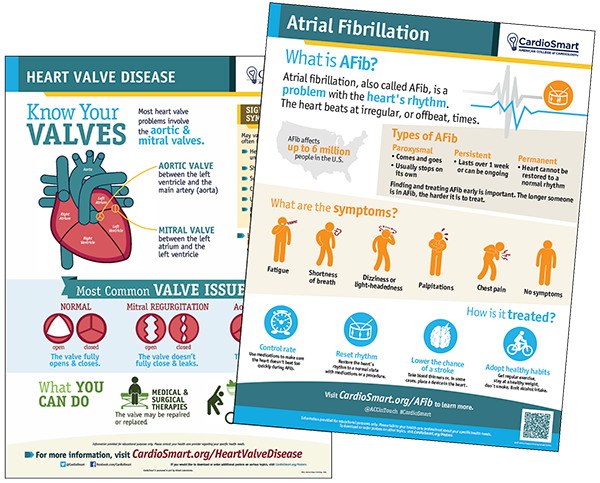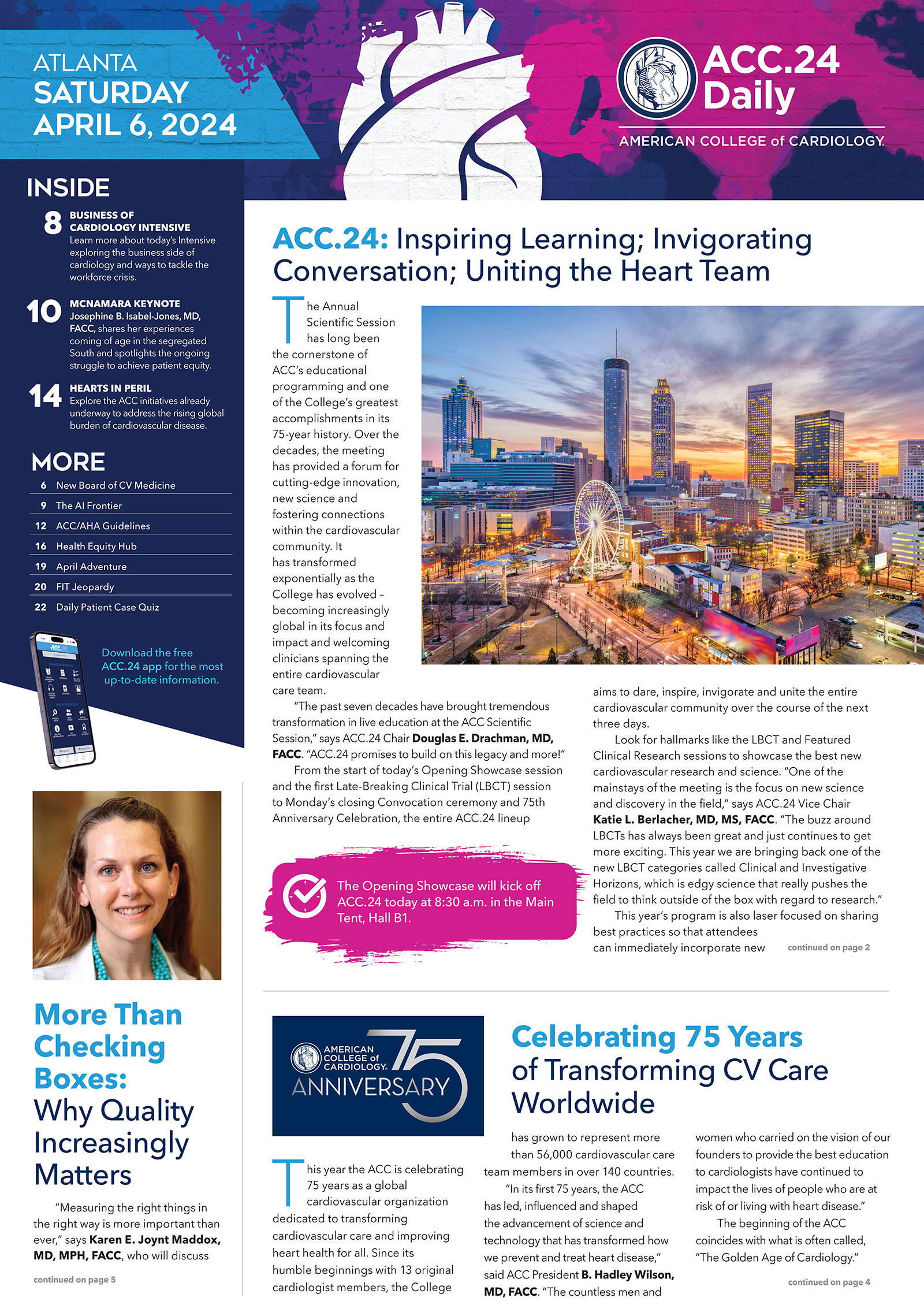ACC/AHA Clinical Guidelines Guiding CV Care For 40 Years

Access additional resources to promote patient awareness and inform shared decision-making on AFib, aortic disease and valvular heart disease at CardioSmart.org.
For the last 40 years, the ACC has partnered with the American Heart Association (AHA) to jointly develop and produce clinical practice guidelines for the cardiovascular community. Starting with the first guideline on pacemaker implantation in 1984, these guidelines set the standard for turning the latest clinical research into recommendations that can be used to inform and guide cardiovascular patient care and improve outcomes.
In recent years, the ACC and AHA have focused on optimizing the guidelines to keep up with the changing technological landscape, the speed and quantity of new research, and the corresponding needs of the cardiovascular community. Since 2019, leaders and staff from both societies have been hard at work implementing recommendations aimed at significantly reducing the time to develop and produce a guideline; enhancing the look, feel and usability of the guidelines in both electronic and print form; and ensuring diversity and inclusivity on writing committees.
During this time, 10 new guidelines have been released, with the two most recent documents from 2023 addressing atrial fibrillation (AFib) and chronic coronary disease. Some of the changes reflected across these newer guidelines include consideration of cost/resource utilization when such data are available; movement toward condition-centric guidelines vs. procedure-centric guidelines; changes to the recommendation classification system; and revised policies and procedures regarding relationships with industry.
Corresponding resources like ACC's Guideline Clinical App, CardioSmart patient education infographics, and JACC interactive tools have evolved over the years to help ACC members with implementing guideline recommendations at the point of care.
During ACC.24, a series of sessions featuring key members from the ACC/AHA guideline committees and other stakeholders will allow for deeper dives into three of the more recent guidelines addressing AFib, aortic disease and valvular heart disease – all of which require more comprehensive approaches to prevention, treatment and long-term management.
In speaking about the AFib Guideline upon its release, Writing Committee Chair Jose A. Joglar, MD, FACC, said: "This is a complex disease. It's not just an isolated disorder of the heart's rhythm, and we now know that the longer someone is in AFib, the harder it is to get them back to normal sinus rhythm." Access ACC/AHA clinical guidelines and related tools and resources at ACC.org/Guidelines.
Keywords: ACC Publications, ACC Scientific Session Newspaper, ACC24
< Back to Listings


